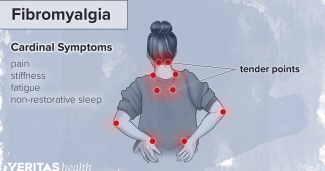
Physical Therapy for Fibromyalgia
Fibromyalgia is a chronic neurologic condition that is characterized by widespread pain, fatigue, difficulty sleeping and memory issues. Although the cause of fibromyalgia is unknown, researchers believe it amplifies painful sensations by affecting the way your brain and spinal cord process painful and nonpainful signals. It is possibly triggered by stress (emotional or physical), trauma, infection, surgery or arthritis. Individuals more likely to develop fibromyalgia are women (80-90% of cases) and those with rheumatoid arthritis, ankylosing spondylitis or systemic lupus erythematosis.
Because there are no specific tests to diagnose fibromyalgia, a diagnosis is made once other conditions have been ruled out and on other key symptoms including extreme fatigue, multiple tender points (18 across the body), sleep difficulty, anxiety or memory issues.
Physical therapy has been shown to alleviate some of the side effects of fibromyalgia. Research supports strengthening and aerobic exercise to help minimize the negative side effects. Regular, moderate-intensity exercise and decreasing body mass index have been shown to decrease the risk of developing fibromyalgia.
Your physical therapist will be able to explain the condition, help with activity modification (self-pacing/monitoring, how to avoid exacerbations and setting activity goals) and techniques to aid in relaxation (minimizing stress, deep breathing, ensuring adequate sleep and different massage techniques).
Once the diagnosis have been made, your physical therapy sessions will be focused on relieving pain, improving muscle strength and flexibility, improving your endurance, reducing muscle tension and improving your balance. Your physical therapist will customize the plan of care to your current pain and activity level with the goal of improving tolerance to activity and overall function to improve your quality of life. A few treatments that have been shown to be effective in the treatment of individuals with fibromyalgia include:
- Low impact aerobic exercise (walking, water aerobics, biking)
- Strength and flexibility exercises: build strength and increase range of motion
- Transcutaneous Electrical Nerve Stimulation (TENS): blocks pain signals going to your brain and spinal cord. Has been shown to reduce muscle spasms and trigger points.
- Thermotherapy (heat): heat has a relaxing effect on your muscles and increases blood flow to painful areas.
- Massage: Reduce muscle tension and trigger points
If you or a loved one are suffering from fibromyalgia, please contact your local Doctor of Physical Therapy for a full examination and assessment to begin the road to living the life you want with less pain. Physical Therapists improve the way you move!

